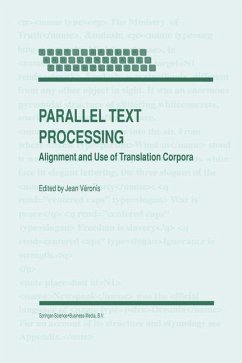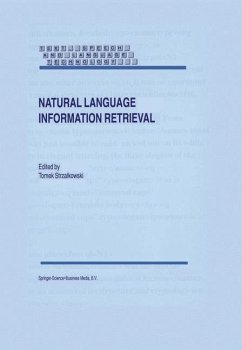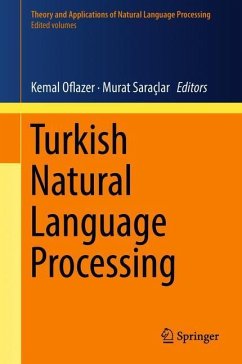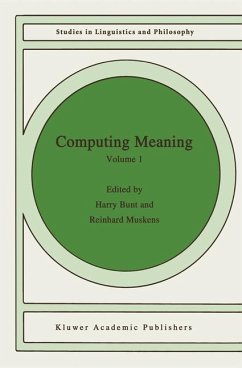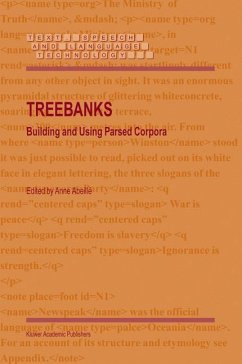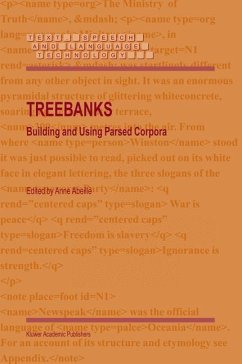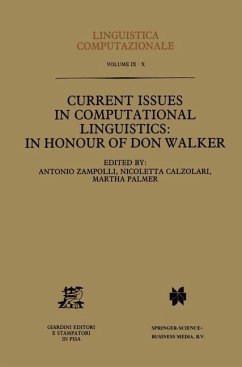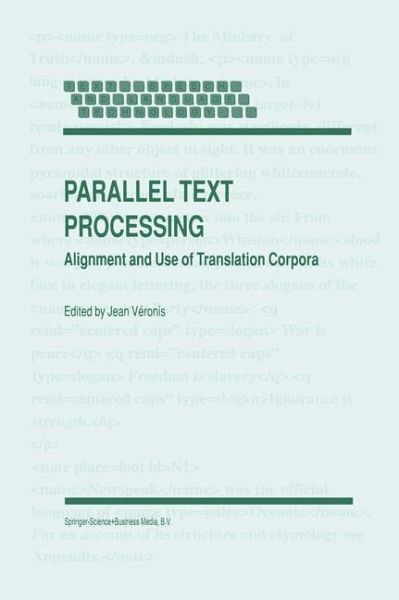
Parallel Text Processing
Alignment and Use of Translation Corpora
Herausgegeben: Véronis, Jean
Versandkostenfrei!
Versandfertig in 1-2 Wochen
153,99 €
inkl. MwSt.

PAYBACK Punkte
77 °P sammeln!
l This book evolved from the ARCADE evaluation exercise that started in 1995. The project's goal is to evaluate alignment systems for parallel texts, i. e. , texts accompanied by their translation. Thirteen teams from various places around the world have participated so far and for the first time, some ten to fifteen years after the first alignment techniques were designed, the community has been able to get a clear picture of the behaviour of alignment systems. Several chapters in this book describe the details of competing systems, and the last chapter is devoted to the description of the ev...
l This book evolved from the ARCADE evaluation exercise that started in 1995. The project's goal is to evaluate alignment systems for parallel texts, i. e. , texts accompanied by their translation. Thirteen teams from various places around the world have participated so far and for the first time, some ten to fifteen years after the first alignment techniques were designed, the community has been able to get a clear picture of the behaviour of alignment systems. Several chapters in this book describe the details of competing systems, and the last chapter is devoted to the description of the evaluation protocol and results. The remaining chapters were especially commissioned from researchers who have been major figures in the field in recent years, in an attempt to address a wide range of topics that describe the state of the art in parallel text processing and use. As I recalled in the introduction, the Rosetta stone won eternal fame as the prototype of parallel texts, but such texts are probably almost as old as the invention of writing. Nowadays, parallel texts are electronic, and they are be coming an increasingly important resource for building the natural language processing tools needed in the "multilingual information society" that is cur rently emerging at an incredible speed. Applications are numerous, and they are expanding every day: multilingual lexicography and terminology, machine and human translation, cross-language information retrieval, language learning, etc.





